We uncover the truth behind Smart Bidding with John Moran! Learn strategies to improve your advertising performance as we dive into how Google Ads reacts to your success.
We don’t want to get controversial regarding Google Ads, but it is our responsibility to point out how you can make the best of an ‘uncomfortable’ situation when it comes to your ad campaigns.
There are no promises. Keep in mind that the digital marketing industry—and the Google Ads platform especially—is continually evolving and adding (or removing) tools and capabilities.
If Solutions 8 can give you key insights to help you get on in the competitive world of digital marketing, well, it is our pleasure. Read on for more!
Table Of Contents
Not Scaling. What? Sorry?
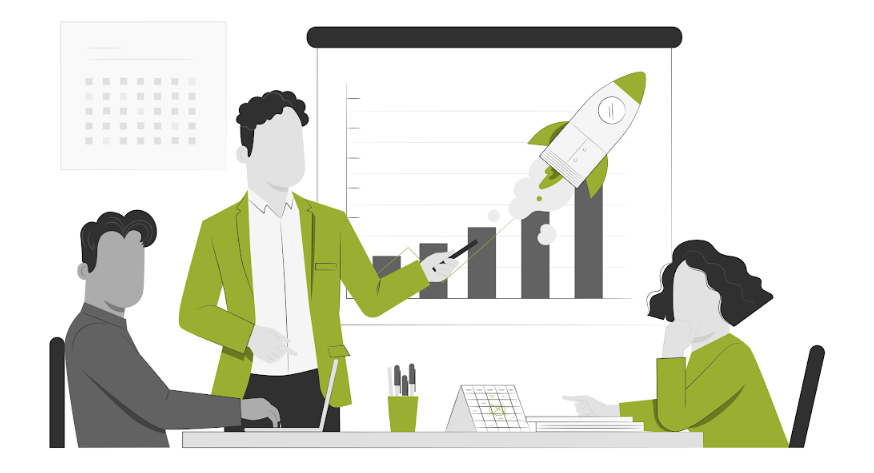
Our observations have not come out of thin air, nor are we the first to query them. There has been direct contact with Google and this is our question:
Why would removing the conversion value allow me to drop the bid CPC and then enter into that incremental inventory?
Google answered the following:
“The key thing to note is that Smart Bidding does not optimize incremental impression delivery. With manual bidding, you can set whatever maximum CPC you’d like with the option to add bid adjustments. Smart Bidding conversion signals are used to predict the likelihood of conversion or probable conversion value and then determine when and how to bid, again based on your goals and targets when set.”
See the part in bold print? What? Sorry? IT DOESN’T OPTIMIZE FOR GROWTH. IT DOESN’T SCALE!! What Google is saying is they price fix based on how valuable it is, and again based on your goals and targets.
Smart Bidding might be favoring warm traffic over cold, affecting your new customer acquisition. Pay-to-play price fixing? We’ll leave you to decide.
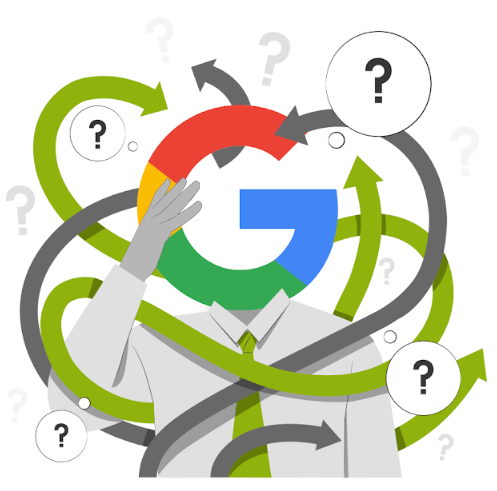
Google Reacts To Your Success
Perhaps this graph will help you understand better. It’s sectioned by day from your conversion action.
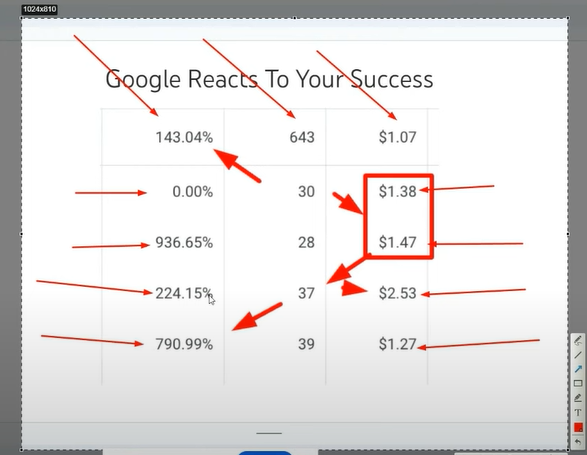
The columns represent ROAS (Column 1), Clicks (Column 2), and CPC (Column 3).
When bad performance happens, you will notice a low CPC the next day. The day after you have that low CPC, you will have good performance, but still with a low CPC. The following day after that, you will have bad performance (low ROAS) and a higher CPC. And the next day you will notice a cheaper CPC to get a better ROAS. See the pattern?
Since performance is bad, clicks tend to go up. Google Ads has respected your tROAS and tCPA and is not going to give you any more than what you’ve asked for. On the contrary, they may even charge you more for your CPCs.
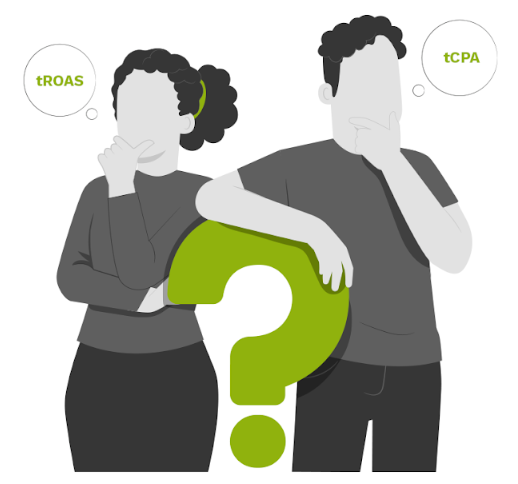
See the ROAS jump to 790.99%? That’s why you have a tROAS goal and that’s why it keeps you complacent.
What does this mean? Any low tROAS bidding put into place will let you instantly win everything in the auction BUT always from the same pool of bidders.
Let’s say there are 100 people in the auction. Well, you can be sure Google knows the ten people who will buy. Those who can afford to pay the most per day, and the most CPC with the lowest tROAS and the highest tCPA, earn the majority from those ten bidders.
IMPOSSIBLE TO SCALE!
Quite simply, when you drop your tROAS, you automatically get more available traffic and your conversions go up. But it doesn’t scale.
You are limiting yourself and can only take what Google gives you. What happens when you force scale? You end up paying more for the same people.
How do we stop it from arbitrarily capping when we start to scale?
Getting That Other 90%
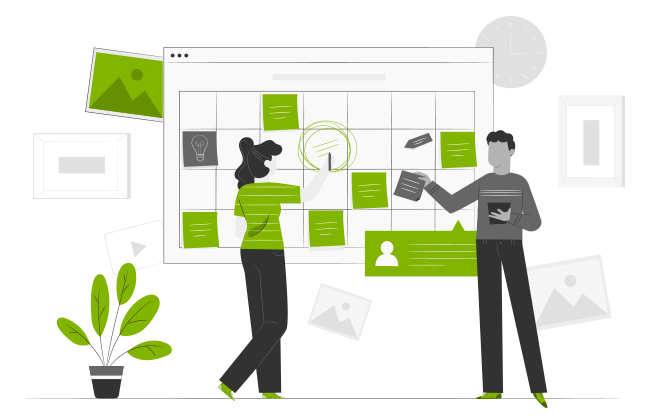
There is a way. Manual bidding could potentially unlock better performance and reach. If Google determines when and how to bid based on advertisers’ goals and targets, it only makes sense that we as digital marketers take a chance on the cold traffic that Google is not focusing on.
Now let’s go back to this part of Google’s answer to John.
“Smart Bidding conversion signals are used to predict the likelihood of conversion or probable conversion value and then determine when and how to bid, again based on your goals and targets when set.”
Let’s take two people bidding on the same keywords, for the same product, on the same day to the same person. Client A has a tROAS of 250 and Client B has a tROAS of 300. Who wins the bid?
It’s automated bidding. Client A has no control over who wins and Client B has no control over who wins. Who chooses the bids? Google does. Why do you think maximized conversion values make your CPCs go haywire?
What happens when your tROAS of 300% arbitrarily starts losing impressions, clicks, and conversions? Is someone else bidding more than you? NO! It means someone is willing to take less profit than you.
Would you like to have more profitability? Why does a tROAS of 500% not scale? We’re not even reaching bid caps and cost caps yet. It doesn’t spend even when click shares and search impression shares are low. Why isn’t it spending?
Because someone is willing to pay a higher CPC within the finite audience that Google has.
Here’s what we propose. Turn off Manual Bidding and watch the clicks flow in. Your positioning doesn’t change and you are likely to get more conversions than before.
Please be aware that the issue is not how to get fewer CPCs. The main question is how do I keep good performance locked in at scale? That is what we should be asking ourselves.
If Smart Bidding goes after warm traffic as John says it does, we can turn off tROAS and turn on Manual Bidding, and watch as new customer acquisition goes up immediately along with an increase in cold traffic.
How can it predict tROAS or tCPA? It’s like a remarketing list for search ads (RLSA) built in. We can potentially bring RLSA back into play for improved results. The only problem is you pay even more!
We suddenly get more cold traffic and in-app performance starts to dwindle and actual performance along with it. Starting fresh with 50 new people seems more appealing than the eight warm traffic people that Google has for you.

A new audience takes longer that’s for sure, and your time for campaign tests might be 90 days rather than two weeks. The strategy becomes obvious and for those of you who were around back in the day, reflects the campaigns of 2016.
Manual CPC with an RLSA and a bid adjustment on returning customers will give you your winning strategy. And you’re back in business!!
Check out our Solutions 8 website for the most effective marketing strategies to help you achieve your business goals.
Author
Jani is a copywriter at Solutions 8 with a passion for short stories, dancing under the stars, and 80s pop music. Her soul’s purpose is to turn herself into a masterpiece. Her future is filled with green fields, flowers, sunshine, and poetry.
 Jani Kahukiwa
Jani Kahukiwa










